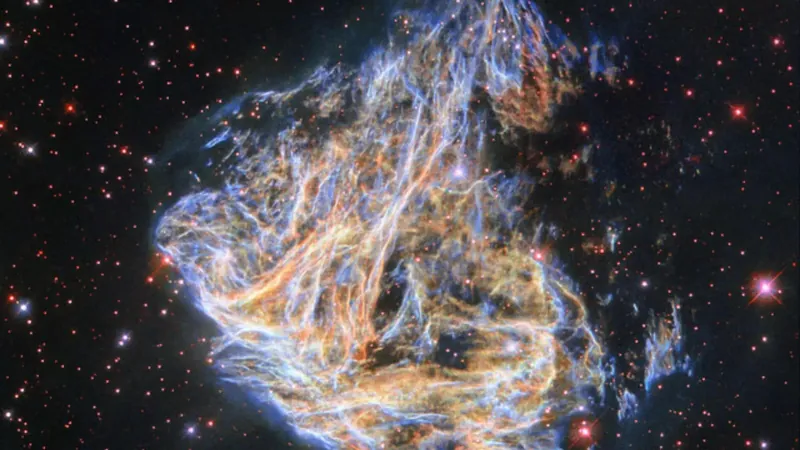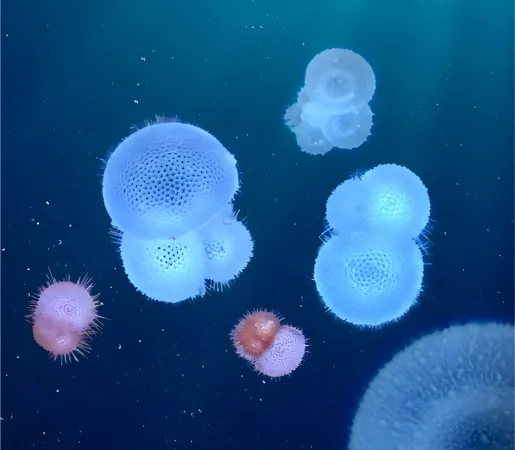
NASA Unveils Breathtaking Images of Nebulae Captured by the Hubble Telescope!
2024-09-19
Author: Jia
The Cosmic Wonders of Nebulae
Nebulae are enormous clouds of gas and dust scattered across the cosmos, often spanning light years in size. They serve as both the birthplaces of new stars and the tombs of dying ones, creating a stunning showcase of the universe's lifecycle. The ethereal beauty of nebulae is highlighted by the brilliant colors and intricate formations produced by radiation from nearby stars. Let’s dive into some of these mesmerizing photographs captured by NASA's Hubble Telescope that reveal the cosmic wonders hiding within nebulae.
The Cone Nebula
One of the highlights is the Cone Nebula, located 2,500 light-years away. This majestic pillar of gas and dust is slowly being worn away by radiation from nearby young stars. The intense energy excites the hydrogen atoms, causing them to glow a vibrant red. Remarkably, only the densest portions of the Cone Nebula may endure the passage of time, potentially birthing new stars and planets from its remnants.
The Orion Nebula
Next, we turn our gaze to the Orion Nebula, an incredible gallery of star formation. This stellar nursery is populated by massive young stars that are sculpting the surrounding gas into intricate shapes, including dense pillars that likely harbor nascent stars waiting to emerge.
The Helix Nebula
Moving on, we find the Helix Nebula, a striking example of a planetary nebula. Seen from Earth, it resembles a glowing eye or a celestial bubble; however, it's actually a trillion-mile-long tunnel of luminous gas surrounding a white dwarf star at its core. This nebula offers a glimpse into the final stages of stellar evolution.
The NGC 281 Nebula
In the NGC 281 nebula, dark knots of gas and dust can be seen absorbing light from the surrounding region. These globules may give rise to new stars or dissipate into the emptiness of space, representing the uncertain fate of cosmic materials.
The Large Magellanic Cloud Nebula
Among the most prolific star-forming regions is a vast nebula located 160,000 light-years away in the Large Magellanic Cloud. This area is host to some of the hottest and most massive stars known to astronomers, surrounded by turbulent clouds of gas and dust that create awe-inspiring cosmic displays.
The Carina Nebula
Finally, we explore the Carina Nebula, also known as the Eta Carinae Nebula, approximately 8,500 light-years from Earth in the Carina constellation. This nebula houses some of the galaxy's largest and most luminous stars, with the Eta Carinae star system being particularly famous for its unique characteristics and behavior.
Conclusion
These spectacular images remind us of the beauty and complexity of our universe. As we continue to explore these distant realms through telescopes like Hubble, we unlock secrets about star formation and the life cycle of stars, offering insights that deepen our understanding of the cosmos. Stay tuned for more stunning discoveries from NASA!





 Brasil (PT)
Brasil (PT)
 Canada (EN)
Canada (EN)
 Chile (ES)
Chile (ES)
 España (ES)
España (ES)
 France (FR)
France (FR)
 Hong Kong (EN)
Hong Kong (EN)
 Italia (IT)
Italia (IT)
 日本 (JA)
日本 (JA)
 Magyarország (HU)
Magyarország (HU)
 Norge (NO)
Norge (NO)
 Polska (PL)
Polska (PL)
 Schweiz (DE)
Schweiz (DE)
 Singapore (EN)
Singapore (EN)
 Sverige (SV)
Sverige (SV)
 Suomi (FI)
Suomi (FI)
 Türkiye (TR)
Türkiye (TR)